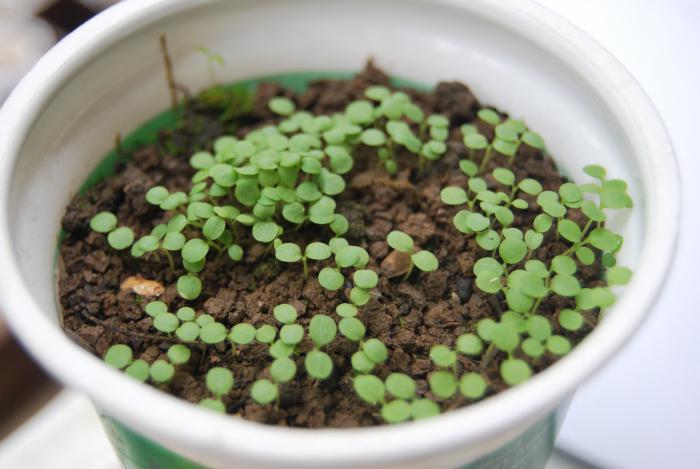Arabis, better known to inhabitants as a rezucha, is a fragrant flowering plant with an unpretentious character. The shrub has about 200 varieties and pleases gardeners with long lush and plentiful flowering. It grows very quickly. Only a few species are common in our latitudes. Although alpine arabis hybrids have adapted to survive in almost any environment.
Arabis: description, types
This is a cruciferous plant; its flowers have the shape of a cross. Leaves are small in size. Arabis can be either plain green or colorful. In nature, the plant most often grows in mountainous and rocky areas. The height of arabis is approximately 25 cm. Its stems creep on the ground and weave. The plant requires systematic pruning to improve flowering. Some species tolerate low temperatures, while others still require at least minimal shelter in the form of, for example, brushwood or spruce branches.
Over a hundred varieties are hybrid. The most popular among them are Caucasian arabis and Alpine arabis. Growing from seeds is the most acceptable option for them. Now we’ll tell you more about each type.
Arabis alpine
This plant has white and pink cruciferous flowers. They are small in size and densely arranged. It blooms from May to June. Has a well-felt pleasant sweet aroma. The maximum height of the bush is 30 cm. The color of the leaves is grayish-green. It takes root and grows very quickly, which earned its popularity.
Arabis Caucasian
This is a shorter species of cirrus. The flowers have a wide range of colors: pink, yellow, white-yellow, white. The plant is very fond of sunny places where it develops faster and blooms more abundantly than in partial shade. This mountain species does not really like moisture. In winter, it should be covered with insulation. To do this, a small structure of metal arcs is built around the plant and is covered with agrofibre. It is not worth taking cover at the first spring rays, it will be necessary to give arabis a little getting used to the sun. Flowering begins in May.
Breeding
There are several ways to propagate a plant:
- division;
- cuttings;
- seeds.
Dividing bush bushings can be carried out in March, April or August, September. One four-year-old plant can produce up to 25 new bushes. In order to divide the bush, it is not necessary to dig it out. Only part of an already rooted plant will need to be separated. The resulting shoots are planted directly in the soil at a distance of 30 cm from each other.
Cuttings are made from the end of spring - the beginning of summer. For this, apical cuttings are removed with a length of approximately 7-9 cm. The cuttings should be planted in a greenhouse, under a film, directly into the soil, after removing the lower foliage. It takes several weeks to root. All this time, the cuttings must be hidden from the sun and watered as necessary. You can change to a permanent place at the end of summer.
Arabis: seed cultivation, planting and care
Propagated by seeds of all types of hives, except terry forms. For them, division of the bush and cuttings are acceptable. Seed propagation allows you to get beautiful hybrid varieties. Arabis from seeds how to propagate? Material is often purchased at flower shows or in special flower shops. It is necessary to first acquire containers. Having bought Arabis alpine, seed cultivation can begin either in October, or in April-May. Frost seeds are not afraid. Sowing soil should be loose and breathable. If garden soil is used, then sand, small pebbles or needles should be added to it, all this will very well affect the seedlings of such a plant as arabis. Growing from seeds involves planting in a substrate at room temperature. Therefore, if the soil is taken from the street, it must be allowed to warm up.

Seeds do not plant deep in the soil. It will be enough to sprinkle them with earth a little. It is advisable to cover the soil with a special covering material for the garden and the vegetable garden, which promotes an even distribution of moisture during irrigation, prevents soil erosion and stagnation of water. This creates the most favorable conditions for Arabis alpine to ascend well. Growing from seeds will allow you to see the first shoots after 10-12 days. During this period, you need to monitor watering, excessive moisture can lead to mold or death of seedlings.
You can plant seedlings in the ground after the appearance of at least three leaves. To grow individual lush bushes, they are planted freely, at a distance of 35-40 centimeters from each other. If you plant several seedlings in one hole, then next year you will see a dense flowering carpet.
Care for arabis. Soil features
The creeper is unpretentious to growing conditions. Preference should still be given to sunny places with loose sandy soil and good air permeability. The plant responds very well to loosening the soil and to removing weeds. But the latter should be dealt with only at an early stage of plant development. In the future, it will itself displace the weeds.
In nature, arabis grows on mountain slopes, so it does not accept overflow in the garden. The plant will have enough natural moisture. It can only be supplemented in a long dry period.
A sunny and calm location will provide abundant flowering, inflorescences will be more compact and lush, and a pleasant sweet aroma will spread throughout the summer cottage.
Abundant flowering in the next year will provide pruning of stems that have faded this year. They must be cut off, leaving a maximum of four centimeters, and be sure to sprinkle with earth.
Pests and diseases with proper cultivation and planned care are not afraid of the Arabis alpine plant. Growing from seeds, grafting, or dividing hulls into bushes for propagation will not cause any difficulties for either experienced or novice gardeners.